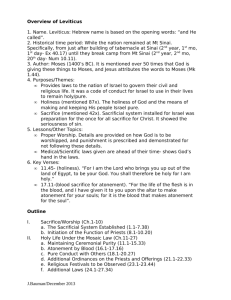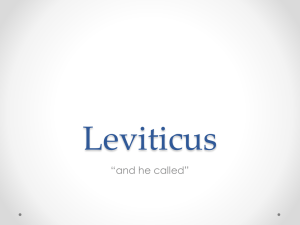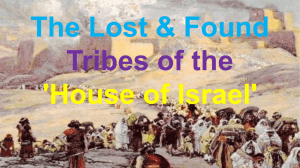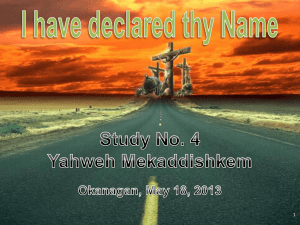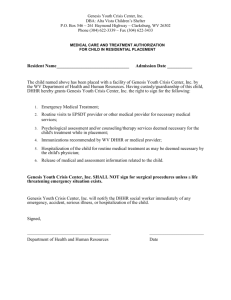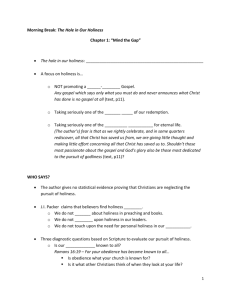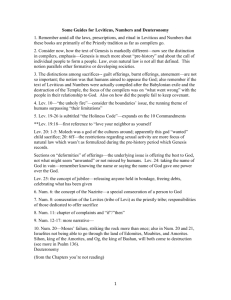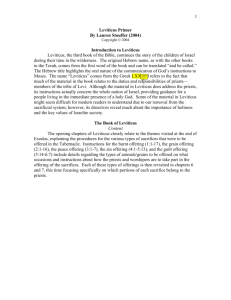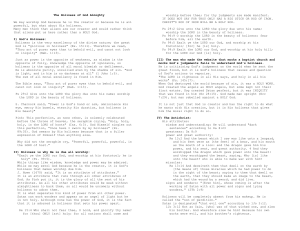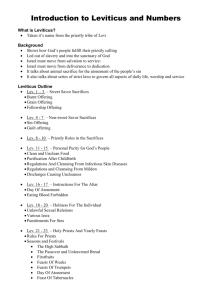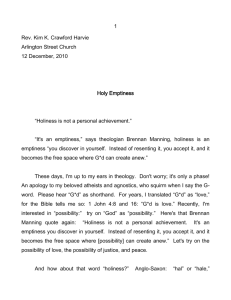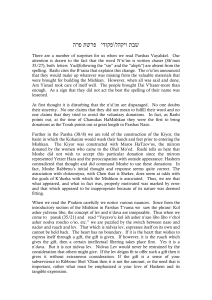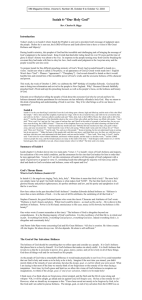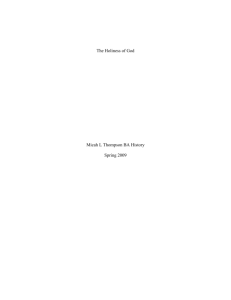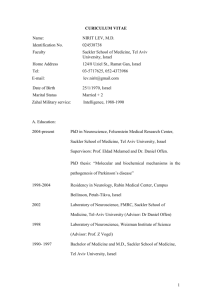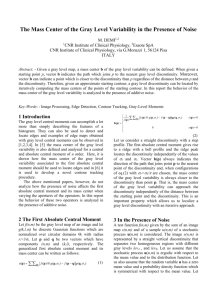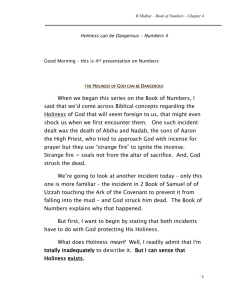Edwin Firmage, “Genesis 1 and the Priestly Agenda”, Journal for the
advertisement
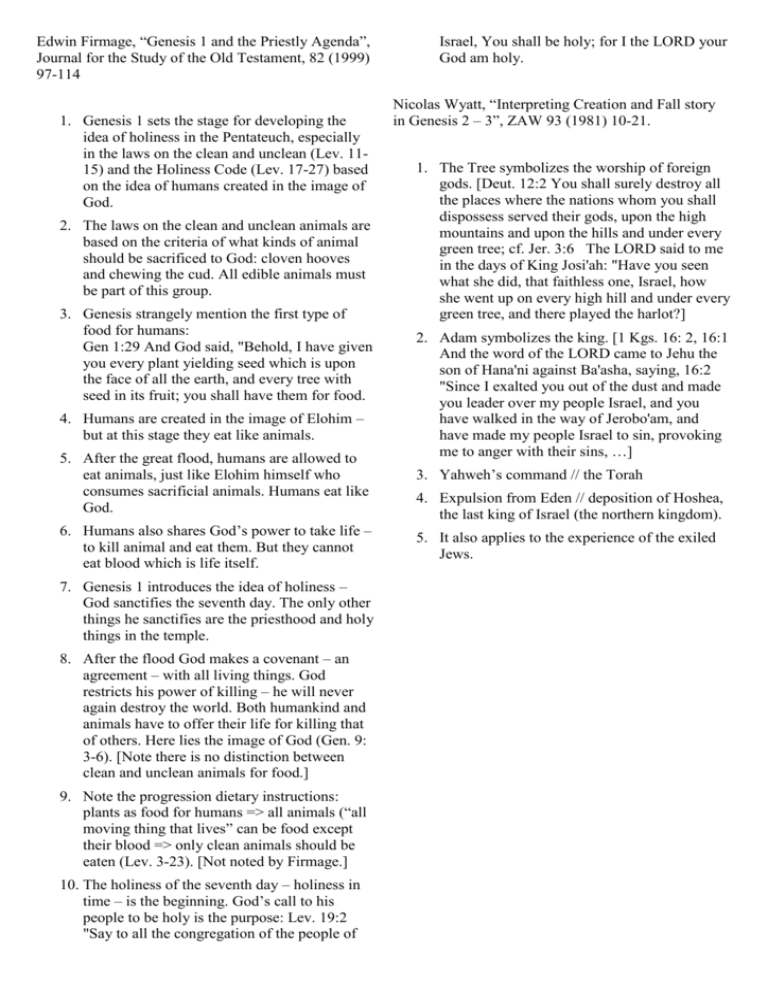
Edwin Firmage, “Genesis 1 and the Priestly Agenda”, Journal for the Study of the Old Testament, 82 (1999) 97-114 1. Genesis 1 sets the stage for developing the idea of holiness in the Pentateuch, especially in the laws on the clean and unclean (Lev. 1115) and the Holiness Code (Lev. 17-27) based on the idea of humans created in the image of God. 2. The laws on the clean and unclean animals are based on the criteria of what kinds of animal should be sacrificed to God: cloven hooves and chewing the cud. All edible animals must be part of this group. 3. Genesis strangely mention the first type of food for humans: Gen 1:29 And God said, "Behold, I have given you every plant yielding seed which is upon the face of all the earth, and every tree with seed in its fruit; you shall have them for food. 4. Humans are created in the image of Elohim – but at this stage they eat like animals. 5. After the great flood, humans are allowed to eat animals, just like Elohim himself who consumes sacrificial animals. Humans eat like God. 6. Humans also shares God’s power to take life – to kill animal and eat them. But they cannot eat blood which is life itself. 7. Genesis 1 introduces the idea of holiness – God sanctifies the seventh day. The only other things he sanctifies are the priesthood and holy things in the temple. 8. After the flood God makes a covenant – an agreement – with all living things. God restricts his power of killing – he will never again destroy the world. Both humankind and animals have to offer their life for killing that of others. Here lies the image of God (Gen. 9: 3-6). [Note there is no distinction between clean and unclean animals for food.] 9. Note the progression dietary instructions: plants as food for humans => all animals (“all moving thing that lives” can be food except their blood => only clean animals should be eaten (Lev. 3-23). [Not noted by Firmage.] 10. The holiness of the seventh day – holiness in time – is the beginning. God’s call to his people to be holy is the purpose: Lev. 19:2 "Say to all the congregation of the people of Israel, You shall be holy; for I the LORD your God am holy. Nicolas Wyatt, “Interpreting Creation and Fall story in Genesis 2 – 3”, ZAW 93 (1981) 10-21. 1. The Tree symbolizes the worship of foreign gods. [Deut. 12:2 You shall surely destroy all the places where the nations whom you shall dispossess served their gods, upon the high mountains and upon the hills and under every green tree; cf. Jer. 3:6 The LORD said to me in the days of King Josi'ah: "Have you seen what she did, that faithless one, Israel, how she went up on every high hill and under every green tree, and there played the harlot?] 2. Adam symbolizes the king. [1 Kgs. 16: 2, 16:1 And the word of the LORD came to Jehu the son of Hana'ni against Ba'asha, saying, 16:2 "Since I exalted you out of the dust and made you leader over my people Israel, and you have walked in the way of Jerobo'am, and have made my people Israel to sin, provoking me to anger with their sins, …] 3. Yahweh’s command // the Torah 4. Expulsion from Eden // deposition of Hoshea, the last king of Israel (the northern kingdom). 5. It also applies to the experience of the exiled Jews.
